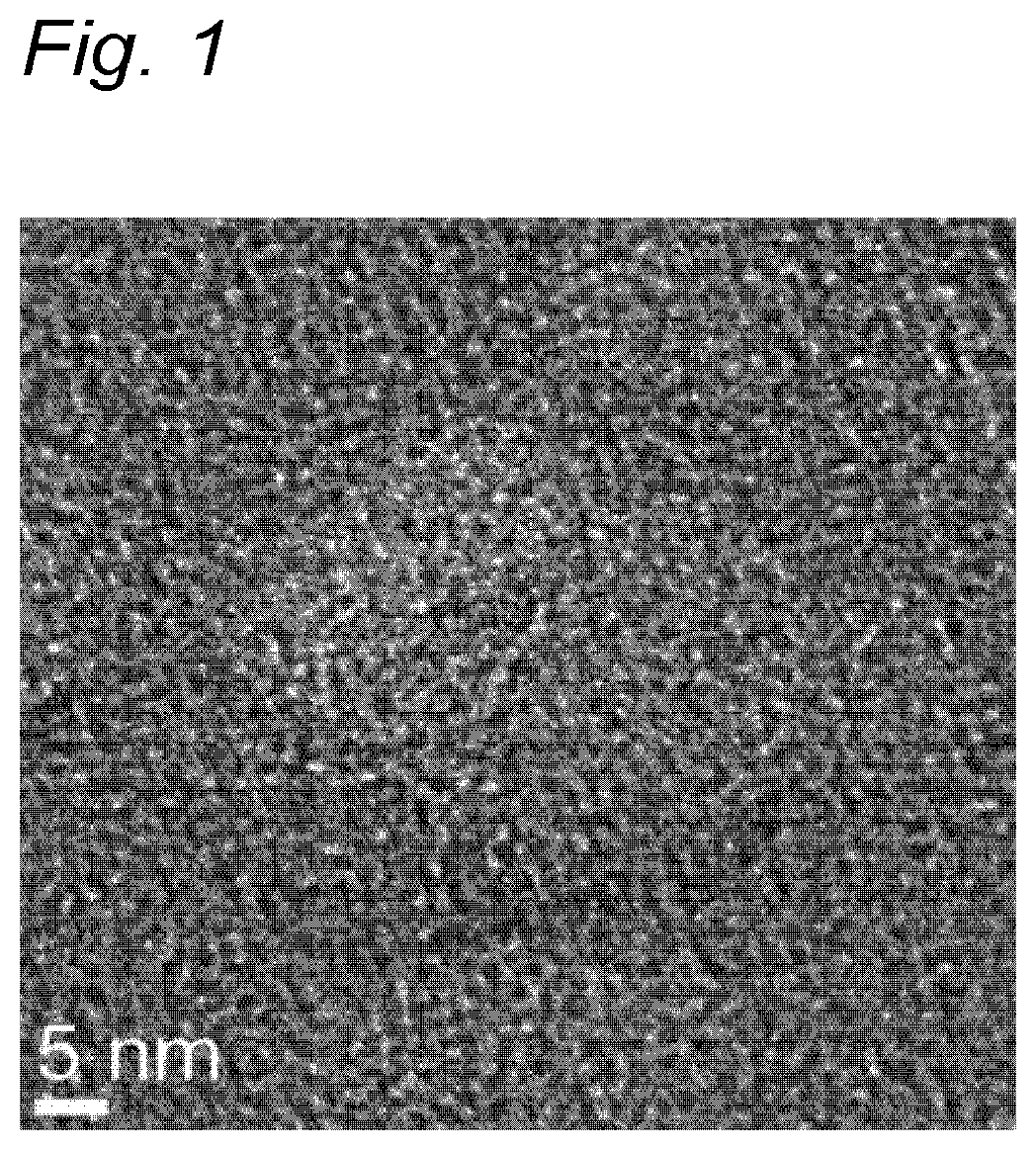Carbonaceous material for negative electrode active material for non-aqueous electrolyte secondary batteries, non-aqueous electrolyte secondary battery negative electrode, non-aqueous electrolyte secondary battery, and production method of carbonaceous material
a technology of carbonaceous material and active material, which is applied in the production method of carbonaceous material non-aqueous electrolyte secondary batteries, etc., can solve the problems of reducing productivity, and achieve high charge/discharge efficiency, high charge/discharge capacity, and low resistance
- Summary
- Abstract
- Description
- Claims
- Application Information
AI Technical Summary
Benefits of technology
Problems solved by technology
Method used
Image
Examples
example 1
[0105]Glucose and ammonium chloride were mixed in a mortar. An obtained mixture was increase in temperature to 1000° C. in a nitrogen gas atmosphere. In this process, the temperature increase rate to 1000° C. was 240° C. / hour (4° C. / min). The mixture was then heat-treated at 1000° C. for 60 minutes under a nitrogen gas stream to perform a carbonization treatment and thereby obtain a char (the first calcining). In this process, a supply amount of nitrogen gas was 1 L / min per 5 g of glucose. Subsequently, the obtained char was pulverized by a ball mill to obtain a pulverized carbonaceous material. The pulverized char was then increased in temperature to 1300° C. and heat-treated at 1300° C. for 60 minutes to perform a high-temperature calcining treatment and thereby obtain a carbonaceous material (the second calcining). In this process, the temperature increase rate to 1300° C. was 600° C. / hour (10° C. / min). The temperature increase and the heat treatment were performed under a nitrog...
example 2
[0106]A carbonaceous material was obtained by performing the treatments as in Example 1 except that ammonium sulfate was used instead of ammonium chloride.
example 3
[0107]A carbonaceous material was obtained by performing the treatments as in Example 1 except that the calcining temperature during the second calcining was 1200° C.
PUM
| Property | Measurement | Unit |
|---|---|---|
| specific surface area | aaaaa | aaaaa |
| specific surface area | aaaaa | aaaaa |
| temperature | aaaaa | aaaaa |
Abstract
Description
Claims
Application Information
 Login to View More
Login to View More - R&D
- Intellectual Property
- Life Sciences
- Materials
- Tech Scout
- Unparalleled Data Quality
- Higher Quality Content
- 60% Fewer Hallucinations
Browse by: Latest US Patents, China's latest patents, Technical Efficacy Thesaurus, Application Domain, Technology Topic, Popular Technical Reports.
© 2025 PatSnap. All rights reserved.Legal|Privacy policy|Modern Slavery Act Transparency Statement|Sitemap|About US| Contact US: help@patsnap.com

